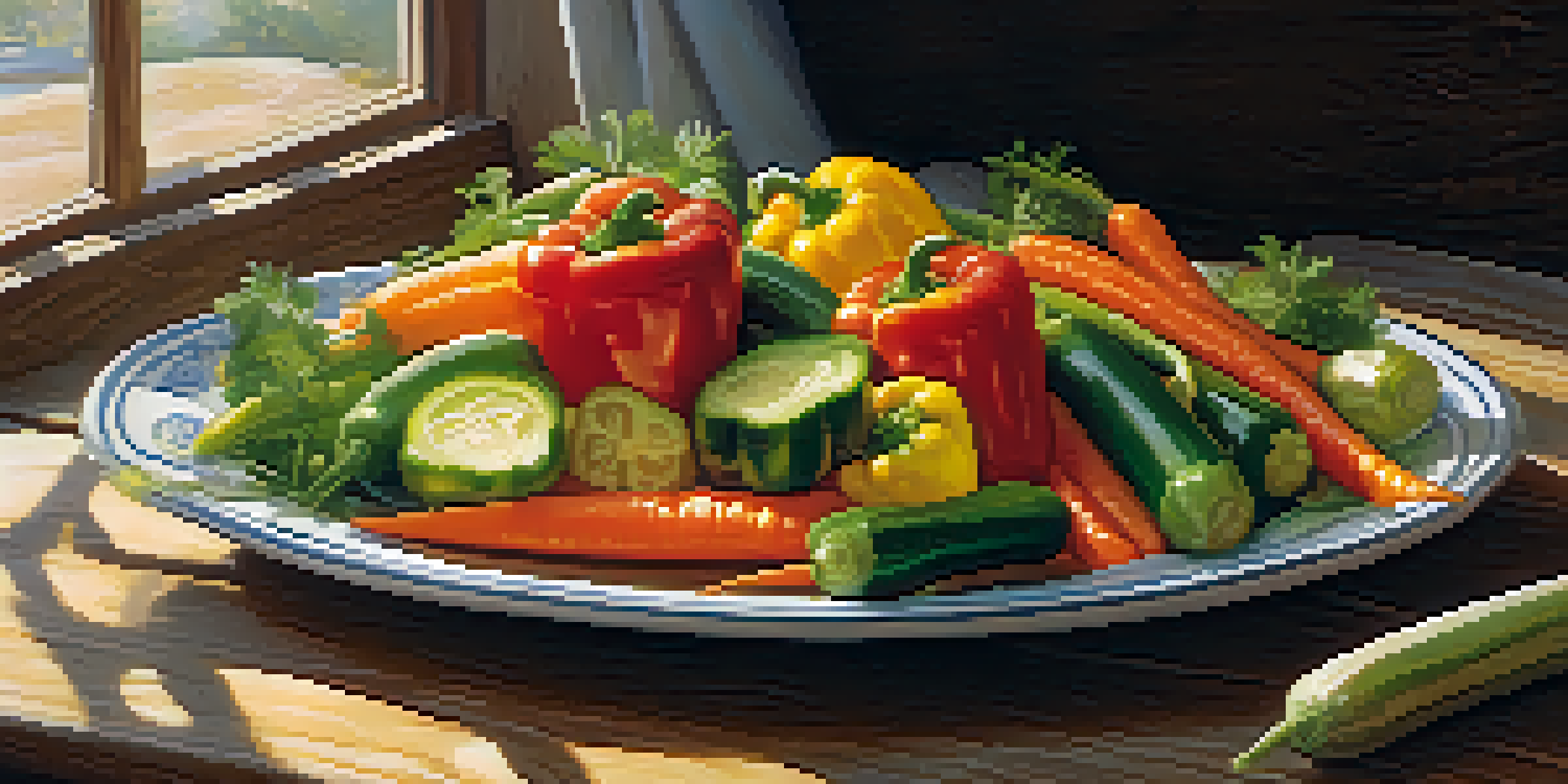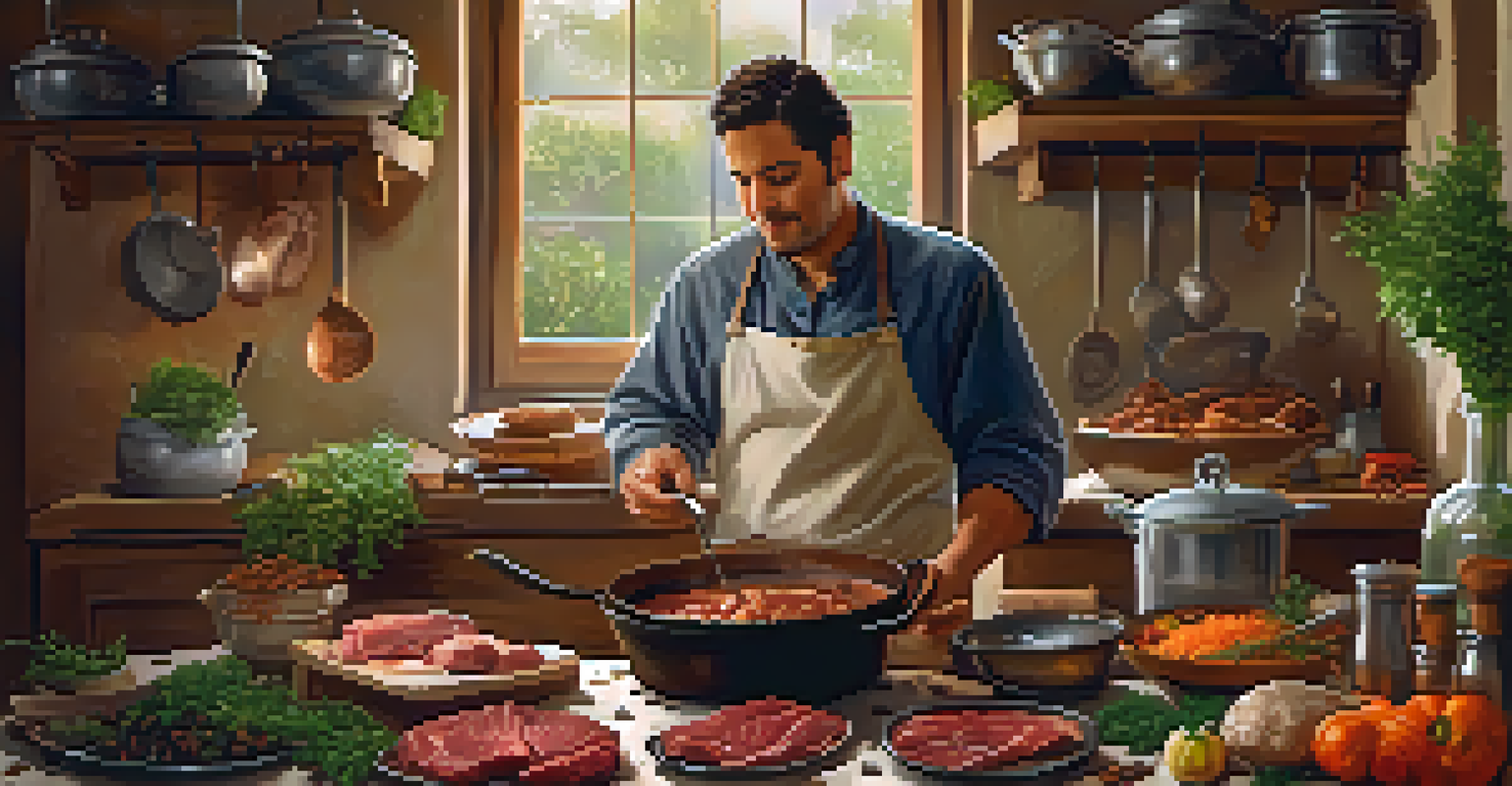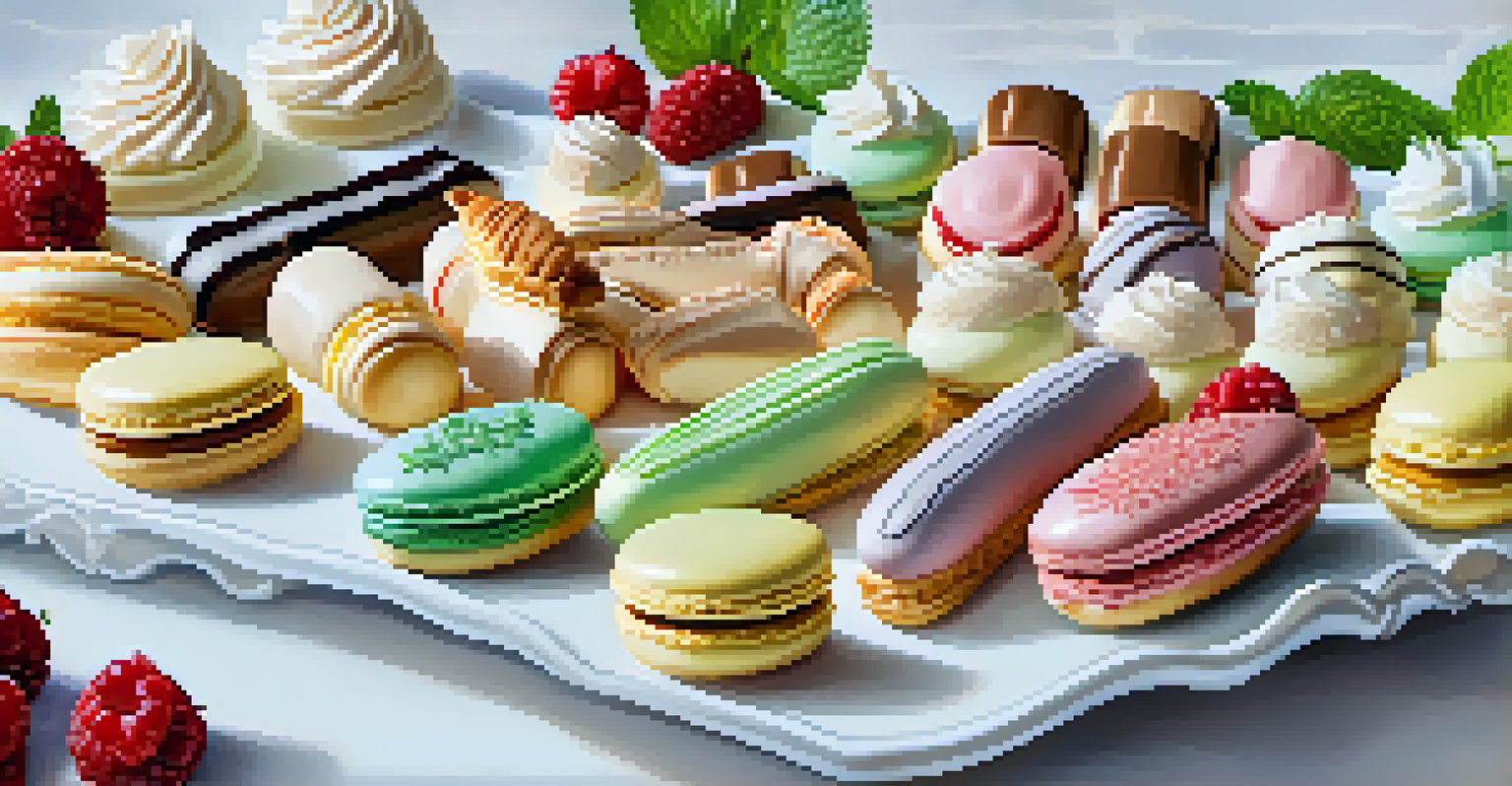French Techniques: Classic Skills for Luxurious Dishes

Understanding the Foundation: Classic French Cooking Techniques
French cuisine is often regarded as the backbone of culinary arts, providing foundational techniques that can transform any dish. From sautéing to braising, these methods aren’t just about cooking; they’re about creating depth and flavor. Mastering these classic skills can elevate even the simplest ingredients into luxurious experiences.
Cooking is an observation-based process that you can’t do if you’re so completely focused on a recipe.
One of the key aspects of French cooking is its attention to detail. Each technique requires precision and patience, encouraging chefs to respect the ingredients and the process. This dedication is what sets French cuisine apart, allowing flavors to shine and develop in ways that are truly remarkable.
By understanding these classic techniques, you not only enhance your cooking repertoire but also gain insight into the artistry of food. It’s about more than just following a recipe; it’s about engaging with the food on a deeper level, making each dish a reflection of your passion and creativity.
The Art of Sautéing: A Quick and Flavorful Technique
Sautéing is a fundamental technique in French cuisine that involves cooking food quickly in a small amount of fat over high heat. This method allows ingredients to caramelize beautifully, creating rich flavors and enticing aromas. Think of it as a dance between the heat and the food, where timing is crucial for achieving the perfect texture.

To sauté effectively, it’s essential to use a heavy-bottomed pan that retains heat evenly. Start with a hot pan and add your oil or butter, letting it shimmer before introducing your ingredients. This ensures that your food sears rather than steams, resulting in a deliciously golden crust.
Master Classic Techniques
Understanding French cooking techniques enhances your culinary skills and deepens your appreciation for food.
Sautéing can be applied to a variety of ingredients, from vegetables to meats, making it a versatile skill in your culinary toolkit. The key is to keep everything moving, allowing each piece to cook evenly and absorb the flavors of the pan. With practice, you’ll find that sautéing is not only quick but also a delightful way to showcase your creativity.
Braising: Slow-Cooked Comfort in French Cuisine
Braising is a technique that combines both dry and wet cooking methods, perfect for tenderizing tougher cuts of meat. By first searing the meat and then slow-cooking it in liquid, you create a dish that is succulent and packed with flavor. This method is like giving the meat a warm hug, allowing it to absorb the surrounding flavors over time.
The only real stumbling block is fear of failure. In cooking, you’ve got to have a what-the-hell attitude.
The beauty of braising lies in its versatility. You can use a variety of liquids, from stock to wine, each imparting its unique character to the dish. As the meat cooks slowly, it breaks down and becomes incredibly tender, while the sauce thickens into a rich, luscious accompaniment.
Braising is not just for meat; it works wonders with vegetables as well. Think of hearty roots and greens simmered in a flavorful broth, transforming simple ingredients into a comforting dish that warms the soul. This technique embodies the essence of French cooking—nurturing and sophisticated yet approachable.
Creating Sauces: The Soul of French Cuisine
In French cooking, sauces are often considered the soul of a dish, elevating flavors and adding complexity. A well-crafted sauce can transform a simple meal into a culinary masterpiece. Techniques like reduction, emulsification, and thickening are essential skills that every aspiring chef should master.
One classic sauce is the velouté, made from a light stock and a roux. This smooth, velvety sauce serves as the base for many other sauces, showcasing the importance of building layers of flavor. It’s a reminder that great cooking often starts with the basics.
Sautéing for Flavorful Dishes
Sautéing allows for quick cooking while caramelizing ingredients, creating rich flavors and enticing aromas.
Experimenting with sauces allows you to express your creativity in the kitchen. By adjusting ingredients and techniques, you can create something uniquely yours while still paying homage to traditional French methods. Remember, the right sauce can turn an ordinary dish into an extraordinary experience.
Embracing Pastry Techniques for Decadent Desserts
French pastry techniques are renowned worldwide, and mastering them opens up a world of delicious possibilities. From flaky croissants to delicate macarons, the art of pastry requires a balance of precision and creativity. Each pastry has its own set of techniques, but the thrill lies in the challenge of perfecting them.
One crucial skill is making pâte à choux, the base for many beloved French desserts like éclairs and cream puffs. This versatile dough puffs up beautifully when baked, creating airy pastries that can be filled with cream or custard. It’s a delightful reminder that sometimes, the simplest ingredients can yield the most impressive results.
Don’t be intimidated by the world of French pastries; embrace the learning process! With practice, you’ll discover that the joy of creating desserts is not just in the final product but in the experience of crafting something beautiful and indulgent. After all, who doesn’t love a sweet treat at the end of a meal?
Mastering Knife Skills: Precision in French Cooking
Knife skills are fundamental in French cooking, as they not only enhance efficiency but also ensure that your food is prepared uniformly. From julienne to brunoise, each cut has its purpose and contributes to the overall presentation and texture of a dish. Think of your knife as an extension of your hand, allowing you to shape and define your ingredients.
Practicing proper knife techniques can significantly improve your confidence in the kitchen. Start with the basics: learn how to hold a knife correctly, the importance of a sharp blade, and the various cuts you can make. This knowledge is not just about speed; it’s about creating a connection with your food.
Plating Enhances Dining Experience
Beautifully plated dishes not only please the eye but also elevate the entire dining experience.
As you become more proficient, you’ll notice how these skills elevate your cooking. Not only will your dishes look more appealing, but they’ll also cook more evenly. Knife skills are an essential aspect of French cuisine, embodying the elegance and precision that this culinary tradition is known for.
Final Touches: Plating Like a French Chef
Plating is where creativity and culinary skills meet, and in French cuisine, presentation is key. A beautifully plated dish not only pleases the eye but also enhances the dining experience. Think of plating as an art form, where colors, textures, and shapes come together to tell a story on the plate.
When plating, consider the balance of your dish. Use contrasting colors to make elements pop, and arrange the components thoughtfully to create a sense of harmony. Remember, less is often more; a cluttered plate can detract from the quality of the food itself.

Taking the time to plate your dish like a French chef can make any meal feel special. It’s an opportunity to showcase your personality and creativity while honoring the ingredients you’ve worked hard to prepare. After all, good food deserves to be presented beautifully.